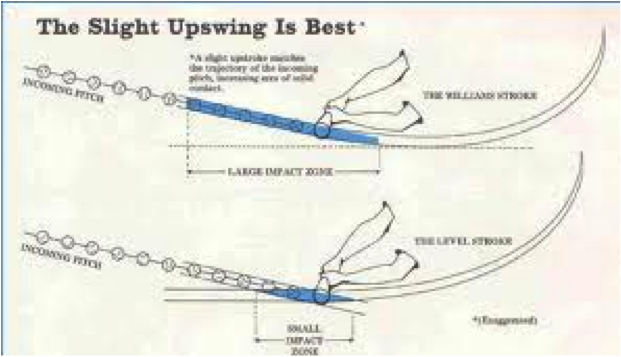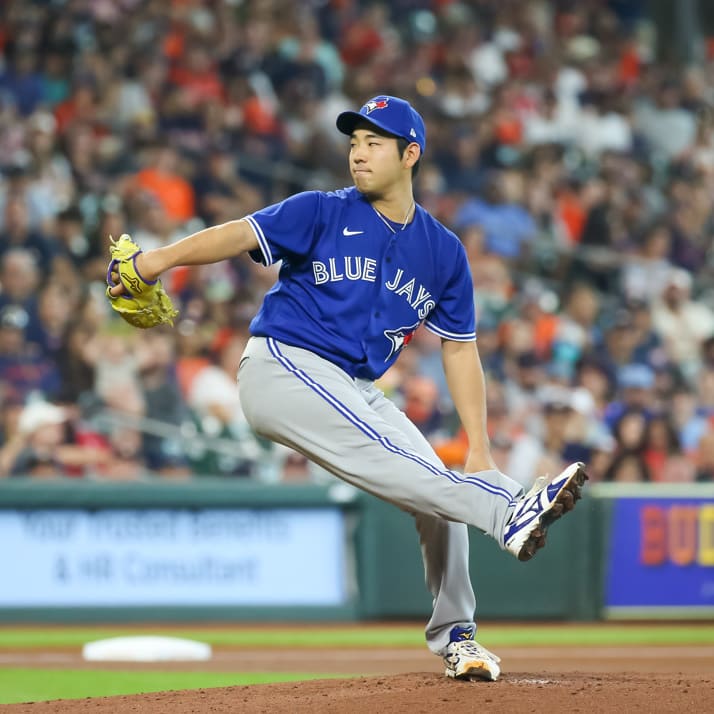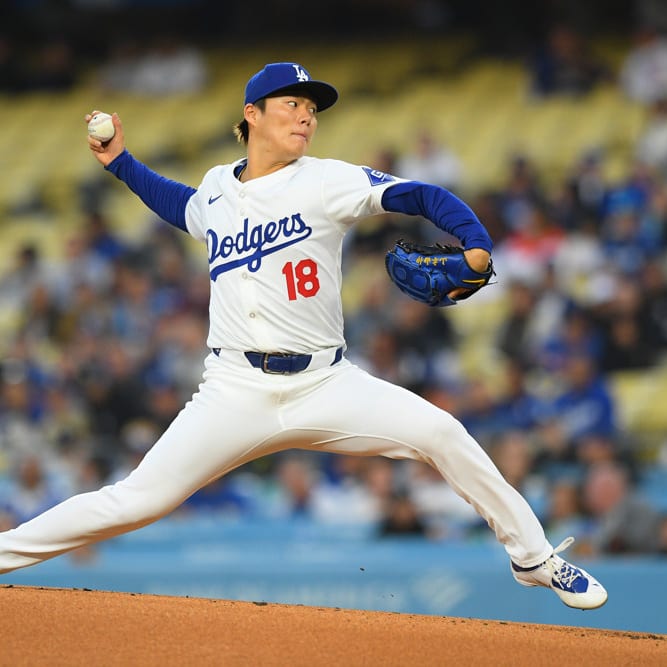This article is part of our The Saber's Edge series.
Everyone is looking for that small advantage in fantasy baseball that will put their team over the top. Hitter splits against certain pitcher types is one such advantage to exploit. While it is common to know if a pitcher mainly allows fly balls or ground balls, the batted-ball nature of hitters is rarely used in any hitter analysis. It should be, though. It is a great tie-breaker when deciding between two players in a daily lineup game.
To start with, here are some details on why a hitter will do better against certain types of pitchers and their pitch trajectories. The key comes down to swing plane. Dan Farnsworth at the Hardball Times describes how this works.

This is the same reasoning that likely explains why flyball hitters do better against ground-ball pitchers than ground-ball hitters do.
Everyone is looking for that small advantage in fantasy baseball that will put their team over the top. Hitter splits against certain pitcher types is one such advantage to exploit. While it is common to know if a pitcher mainly allows fly balls or ground balls, the batted-ball nature of hitters is rarely used in any hitter analysis. It should be, though. It is a great tie-breaker when deciding between two players in a daily lineup game.
To start with, here are some details on why a hitter will do better against certain types of pitchers and their pitch trajectories. The key comes down to swing plane. Dan Farnsworth at the Hardball Times describes how this works.

This is the same reasoning that likely explains why flyball hitters do better against ground-ball pitchers than ground-ball hitters do. A ground-ball pitcher tends to throw pitches with more negative vertical movement. The correlation between pitcher ground-ball percentage and average vertical movement on fastballs (PITCHf/x data) is slight but appreciable (R-squared = .14). Flyball hitters tend to swing on a sharper uphill plane, matching the steeper downhill plane of ground-ball pitchers. This results in more true contact and driving through the ball on the same level, producing more hard line drives and well-hit fly balls.
And the work was continued with a recent article by Shane Tourtellotte, also at the Hardball Times.
Between grounders and flies sits the zone of the line drive, well and away the most productive of the three main classifications of batted balls. If one players wants a fly and the other a grounder, a stalemate between their tendencies might produce a bounty of liners. This could go a long way to explaining why the opposite trajectory platoon is better for hitters than a same-type platoon.
...
Despite that narrowness, we do see some solid conclusions. One is even the one I was hoping for: opposite trajectory platoons produce an elevated line-drive rate that helps batters perform better than against same trajectory pitchers
With the why out of the way, now it is time to move onto finding players who have this advantage. Easier said than done. For years, the only place this information was found was at Baseball-reference.com on each player's Splits page.
From watching Mike Moustakas play for the last few seasons, he has a huge upper cut in his swing. His bat is more likely to make contact with pitches with a downward/ground-ball trajectory. This is definitely the case as he has career .818 OPS against ground-ball pitchers and .632 OPS against flyball pitchers. This advantage makes Moustakas a must start against such pitchers as Twins right-handed Kyle Gibson (53.4 GB%). Moustakas has about a league average lefty-righty platoon split with a 100-point advantage in OPS against right-handed pitchers. His big advantage comes with the 200-point advantage against ground-ball pitchers. In just eight battles between the two, Moustakas is 3-for-7 with two doubles and a walk. Not a huge sample, but he has feasted on ground-ball pitchers. While no longer in the AL Central, Justin Masterson (58.0 GB%) pitched to Moustakas 23 times with Moustakas posting a 1.131 OPS. Moustakas, on the other hand, has only posted a .227 AVG against the Twins Phil Hughes (34.0 GB%), who is an extreme flyball pitcher.
Fantasy owners can easily find pitcher ground-ball rates, but a person would need to go to each hitter's page at B-Ref to get the batter splits. I have decided to do the work for you. I collected the three-year values (2012-2014) for 99 percent of all hitters (removed those in extremely small samples) who saw action in 2014. For continuity of information with B-Ref, I divided the ground-ball nature of pitchers into three groups by ground-ball percentage (GB%). I only use GB% instead of GB/FB ratio and FB% so I only have one value to reference. The ground-ball pitchers had a GB% greater than 48 percent, flyball pitchers had a rate less than 40 percent, and the middle group is between the two values. Here is a link to the values. Additionally, here are the top 10 regulars who see the biggest difference in OPS when facing high and low ground-ball pitchers.
Better Against High GB% Pitchers
(Difference between High GB% OPS and Low GB% OPS)
| Carlos Gomez | +.224 |
| Chris Carter | +.218 |
| Jayson Werth | +.179 |
| Mike Napoli | +.177 |
| Todd Frazier | +.161 |
| Pablo Sandoval | +.152 |
| Josh Reddick | +.150 |
| Justin Morneau | +.145 |
| Matt Wieters | +.140 |
| Darwin Barney | +.137 |
Better Against Low GB% Pitchers
(Difference between High GB% OPS and Low GB% OPS)
| Carlos Santana | -.180 |
| Mitch Moreland | -.182 |
| Mike Morse | -.193 |
| Mark Teixeira | -.208 |
| J.D. Martinez | -.208 |
| Yunel Escobar | -.223 |
| Billy Butler | -.235 |
| Garrett Jones | -.271 |
| Adam LaRoche | -.278 |
| Ryan Howard | -.299 |
In most cases, owners will take the better overall players like Carlos Gomez. But say they are in a league and need to decide between two right-handed hitters like Mike Napoli and Billy Butler. Looking to see if Butler is a facing a flyball pitcher while Napoli is facing a ground-ball pitcher could easily be the determining factor on whom to play. Small advantages like these add up over a season.
Now, how to make the data easy to use. I would recommending going though your rosters and finding out which hitters have this platoon advantage. Then find that day's starter (three-year pitcher ground-ball rates are on second tab of the linked document). It is not the easiest process, and I believe if it was easier, more people would be taking advantage of these players. Once an advantage becomes easier, everyone will begin to use it and it is no longer an advantage.
I believe hitter batted-ball splits are the most underutilized advantages in fantasy baseball. The information is not easily obtained and takes a bit of work to integrate it into setting daily lineups. In a game where a season can come down to just a small differences in stats, the use of this information can't be understated. As always, let me know if you have any questions.










